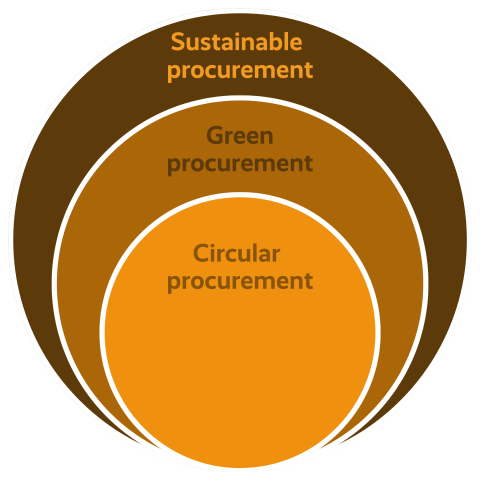What is a sustainable and circular procurement?
A sustainable and circular procurement ...
| ... meets a concrete need |
✔ Consider the need rather than the product ✔ Consider the actual quantity required ✔ Do not buy if not necessary |
| ... considers a smart use |
✔ Focus on the service rather than ownership (e.g. through new business models such as Product as a Service (PaaS)) ✔ Efficient and intensive use of products (e.g., sharing economy) |
| ... prevents waste |
✔ Rely on used materials and existing products (e.g. second hand, sharing economy ✔ Responsible management and efficient use of resources ✔ Avoiding packaging or choosing reusable or recyclable packaging |
| ... extends the lifespan of products and parts |
✔ Reuse |
| ... recycles materials at the end of their life |
✔ Respecting the biological cycle |
| ... limits emissions throughout its entire life cycle |
✔ Energy efficiency and renewable energies |
| ... takes into account the protection of the environment |
✔ Avoiding the pollution of water, air and soil |
| ... respects the human rights of people in production and consumption |
✔ Decent working conditions and wages |

